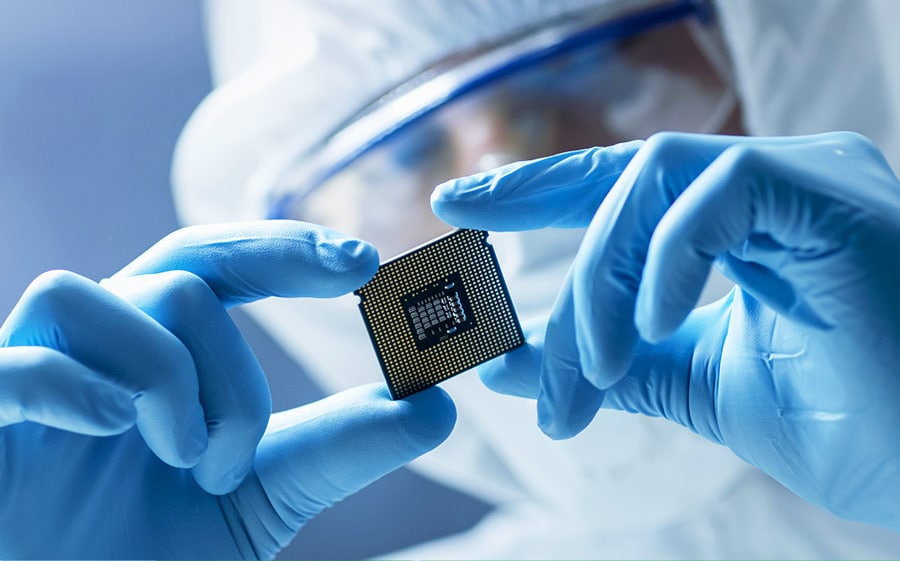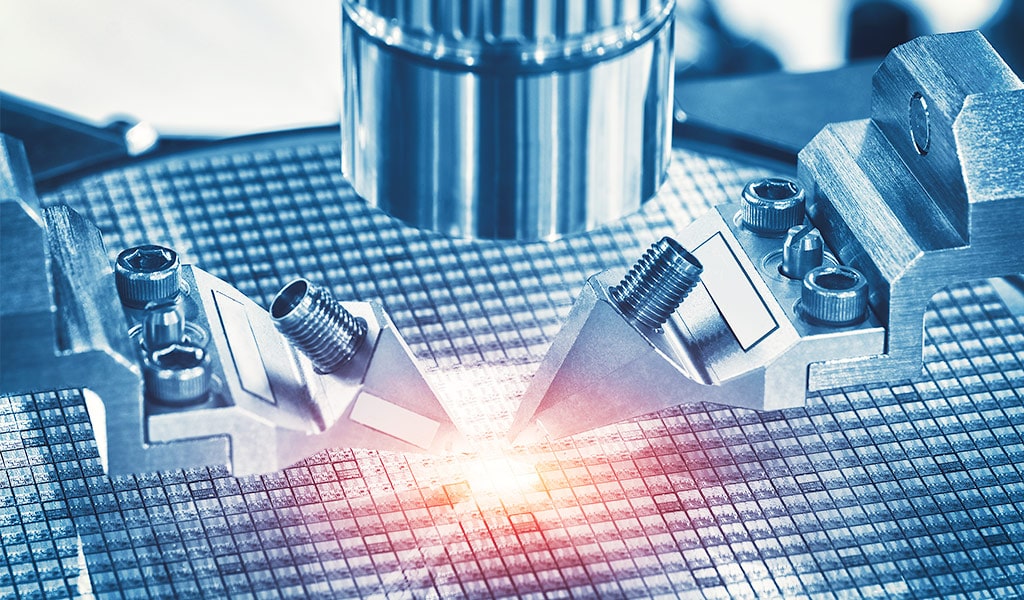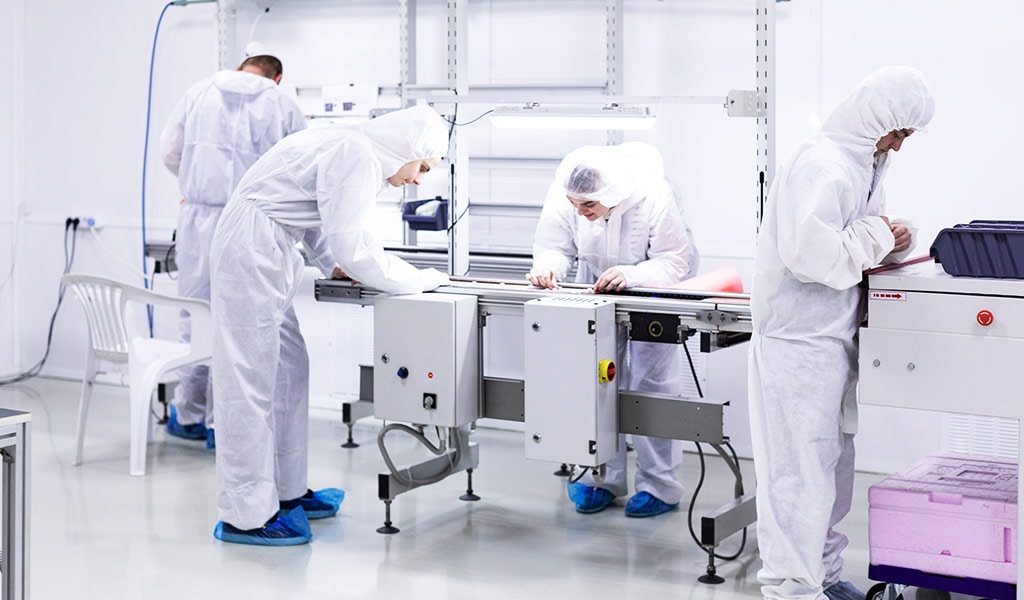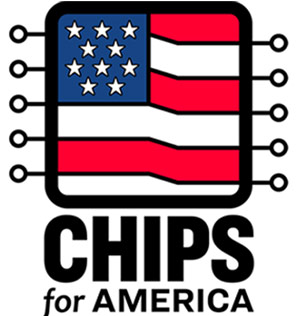
During President Biden’s first year in office, his administration implemented a strategy to revitalize domestic manufacturing, create new jobs for Americans and strengthen our supply chains. On August 9, 2022, Biden signed into law the bipartisan CHIPS & Science Act of 2022 that seeks to bring the majority of semiconductor research, development, and production back into the US.
This is a major investment of $280 billion in funding that will roll out in the coming years, with $39 billion allotted solely to manufacturing incentives to help build and expand fabrication facilities. Along with increasing domestic semiconductor manufacturing, the Act also hopes to make America a leader in scientific research and technology again.
As a company in the electronics industry, we’re excited to see the CHIPS & Science Act slowly come to fruition. Let’s take a deeper look into what the act entails and how legislation will help the US get its competitive edge back.
What sounds easier: getting a shipment from a manufacturer one state away or getting a shipment from across the Pacific?
During the pandemic, the electronics industry saw semiconductor shortages that caused manufacturing halts for many products, including consumer electronics, automobiles, and household appliances. With the United States making only 12% of the world’s semiconductors, compared to the 37% we made in the 1990s, the shortage highlighted our dependance on semiconductor production overseas.
The global pandemic, along with current increasing tensions within East Asia, have made it clear that this is no longer a sustainable nor secure way to move forward.

The CHIPS and Science Act seeks to return the US to a position as a leader in the science and technology industry while revitalizing the domestic manufacturing job market.
Breaking it down, these are the most impactful goals that the CHIPS and Science Act seeks to have:

Increasing domestic semiconductor production reduces the chances that extreme events or geopolitical tensions will disrupt industry supply while simultaneously increasing total global fabrication capacity. This would reduce the country’s dependence on East Asia which, at the time of writing this, is responsible for up to 75% of global semiconductor production.

Funding from the Act will help with the creation and expansion of fabrication facilities, along with increasing domestic research and development. This will allow the country to improve its long-term economic competitiveness on a global scale and cementing its position as a viable competitor in future industries such as nanotechnology and clean energy.

Creating new plants and increasing research and development will also increase the availability of skilled, high-paying jobs back to domestic workers. The Semiconductor Industry Association estimates that this will create over 1 million temporary jobs for the construction of the plants themselves and over 500,000 permanent jobs in sectors such as manufacturing, Artificial Intelligence, and clean energy.
Along with this, the Act will also provide industry work to underutilized parts of the country, rather than simply stuffing them into the already overcrowded coastal hubs.
The CHIPS and Science Act will ensure the future is made in ALL of America and [will] unlock opportunities in science and technology for those who have been historically left out.” (whitehouse.gov)
The Act will also provide investments for much-needed STEM education and training that will reach people from all backgrounds, helping them develop the skills needed to take on the jobs created in this emerging industry.
The Act offers $280 billion in funding over the coming years to be used towards scientific research, semiconductor manufacturing, and other incentives, such as grants and loans, to build or expand facilities for semiconductor fabrication to encourage domestic chip production.

On February 28, 2023, the first funding opportunity of the CHIPS Program was released. This first step focuses on funding projects that involve the construction, expansion, and modernization of commercial fabrication facilities. Pre-applications and full applications for funding will start being accepted on a rolling basis as of March 31, 2023. Awards will be in the form of direct funding, loans, or loan guarantees, with direct funding amounts determined after rigorous analysis of a project’s expected returns.
Moving forward, two additional funding opportunities will be released this year: one for semiconductor materials and manufacturing equipment facilities in late spring, and one for research and development facilities in the late fall.
To ensure that the US will benefit from it, the CHIPS act does outline some requirements to be eligible for funding. For one, the money cannot be used for stock buybacks, paying dividends or other capital distributions. Recipients would also not be allowed to build or expand upon any fabrication plants in China or other potentially unfriendly countries for chips under 28nm. These requirements push towards at home production of advanced chips to decrease the dependency on East Asian countries for chips under 28nm.
The CHIPS and Science Act is set to heavily impact semiconductor research in the United States. This is one of the largest publicly funded research and development programs in the country’s history. With this new funding for semiconductors, America will maintain and continue to advance its competitive edge as leader in these sectors. Some other areas of interest that will be getting funding are NASA’s search for life beyond Earth and planetary defense, the NIST’s AI, cybersecurity, and quantum information research, and the Department of Energy’s research to better understand atoms, cells, and the universe.
Over the next coming years, with the help from the CHIPS Act, more fabrication plants will be built or expanded upon within the US, creating an influx of available, good-paying jobs for Americans, helping to bolster the economy in areas that need it most.

Since the passage of the CHIPS and Science Act, nearly $200 billion in additional investments has been announced by private companies for semiconductor production in the US. Companies like Intel, Micron, and Qualcomm have announced they plan to build new chip fabrication plants in the United States. Micron has invested $40 billion in memory chip manufacturing, Qualcomm and GlobalFoundries announced a $4.2 billion partnership, and Intel is set to build a $20 billion semiconductor plant in Ohio. So far, over 40 new projects across the US have been announced, including new facilities where the materials and equipment for chipmaking are manufactured.
While there’s no way to know for sure how the CHIPS and Science Act will impact the future of technology, the hope is that America and new technologies will prosper under it. Some predict that the full effect of the Act won’t be fully felt until 2030. However, with funding opportunities already becoming available, we are hopeful for the best as construction on new facilities begins and more intensive research is conducted.
Suntsu has been a manufacturer and distributor of electronic components for over 20 years, and we’re excited to see how the CHIPS Act will alter the semiconductor sector. The sky is the limit for technology and the CHIPS and Science Act lays the foundation for these discoveries and advancements to be made domestically again.
Looking for more information or seeking to learn more about our product lines?
Give us a call or request a new quote today!